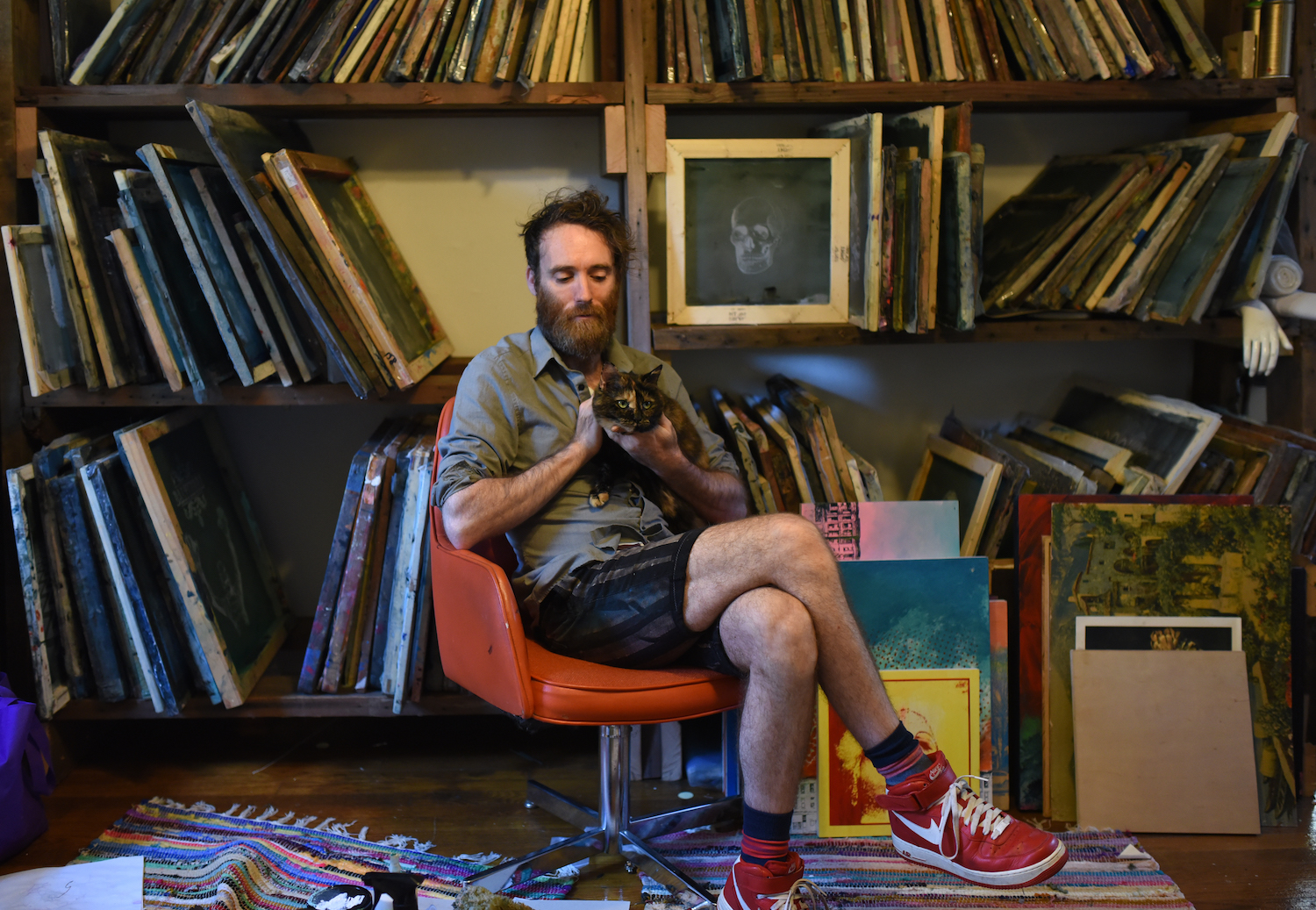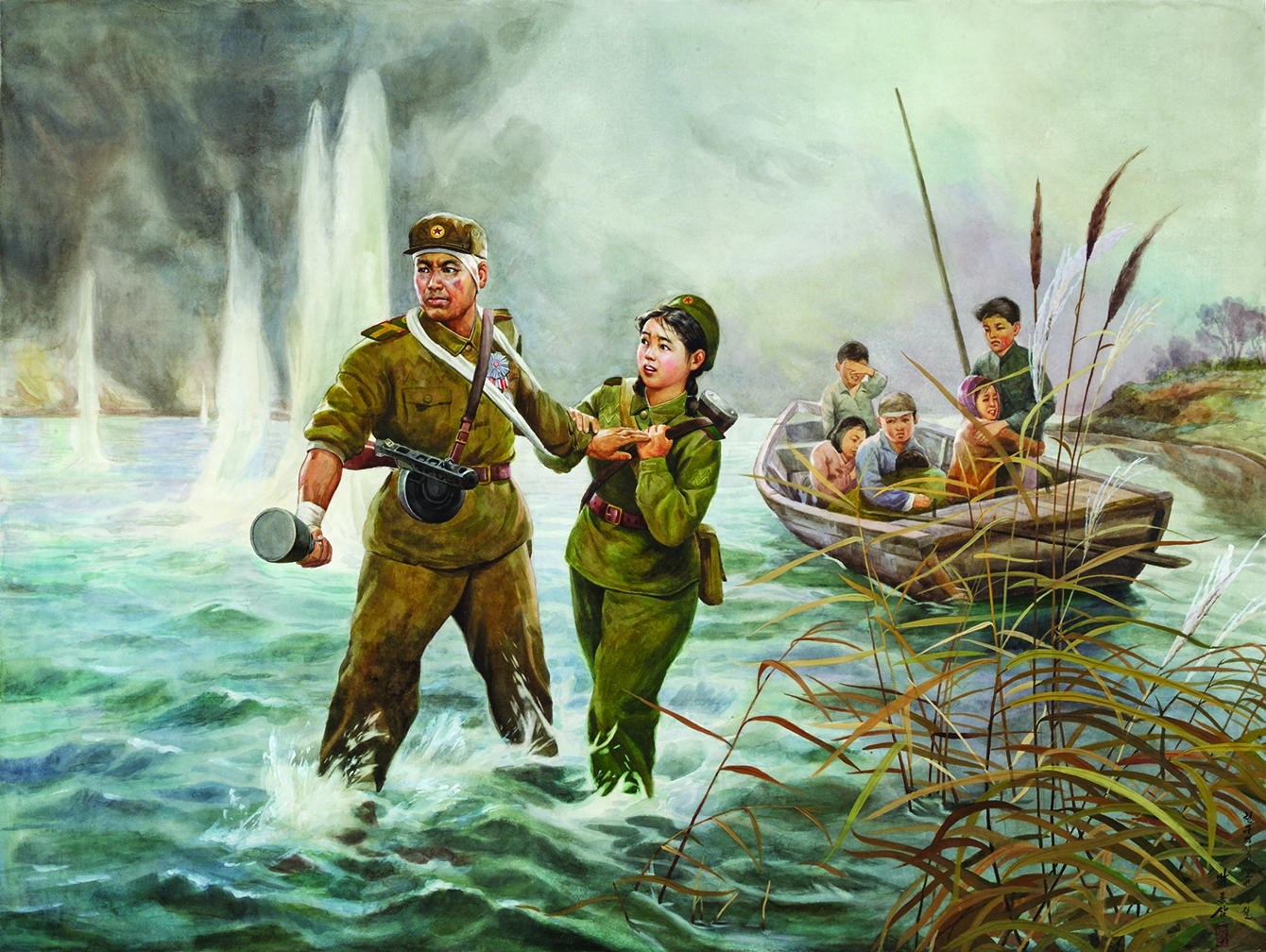Under the Scope at Goucher College’s Silber Gallery by Anna Fine Foer
Let’s face it: Science is a polarizing force in America today. While some celebrate and even fetishize the amazing accomplishments of science, many doubt, fear, and flout the findings of scientists, climate change deniers in particular. Like the modern news cycle, where facts seem to be invented, scrambled, refuted, and aggregated, it’s interesting to view a group of artists who all use science as the starting point for their work.
At Goucher College’s Silber Gallery, some of the artists embellish and fictionalize scientific ideas while others invent ‘live’ art specimens, where the process is still unfolding. Either way, Under the Scope offers a curious assortment of science-inspired works that will make you question your own pre-conceived notions of science. The group of artists that curator Laura Amussen picked are Benjamin Andrew, Selin Balci, Elizabeth Crisman, Lauren Kalman, A Gray Lamb, Nicole Shiflet, and Kathy Strauss and they offer two main directions for their work. While some appropriate a ‘sciency’ approach to their subject matter or art processes, others invent their materials under observation, riffing on pseudo-scientific concepts.
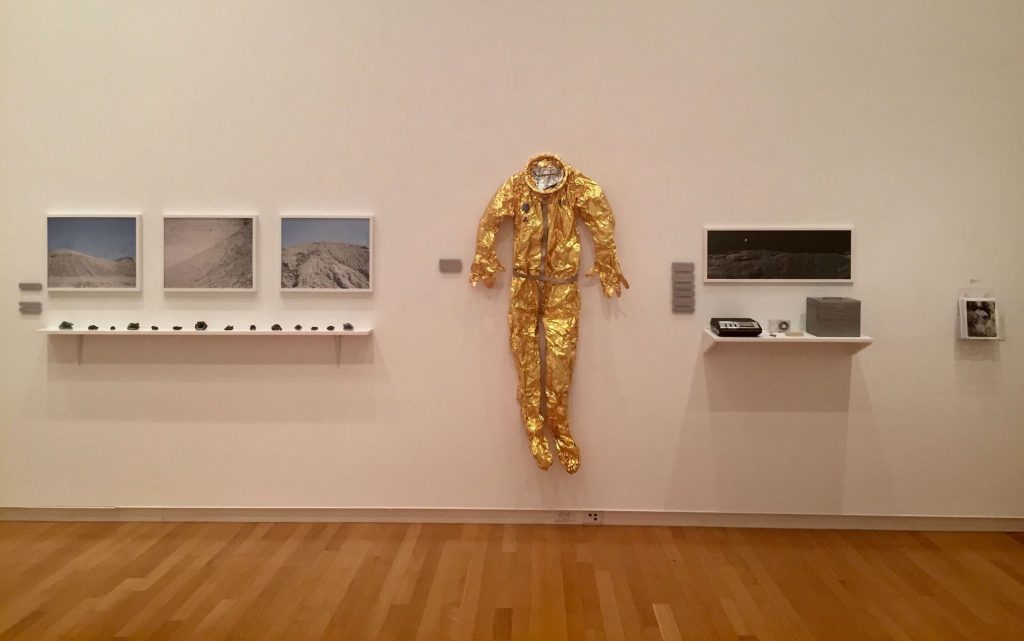 A Gray Lamb
A Gray Lamb
N.I.H.C.E. is the New Institute of Historical Cosmological Exploration, a pseudo-science museum created by A Gray Lamb. Like a real museum, it is dedicated to the preservation and display of artifacts and information. This carefully curated collection is an indictment of out-of-date exhibits in science museums across the world. Lamb made geodes with salt crystals (a “live” artifact in this show) that are part of research conducted by the Institute of Cosmological Exploration.
She also includes photos of earth’s geological formations that are photo-shopped composites of the Utah dessert where the location information has been redacted. Like filmmaker Kubrick’s images of a fake moon landing, which are more compelling than the real images sent back to us, Lamb makes us want to believe that her artifacts and evidences are real.
Lamb’s work feels educationally familiar, but it confronts us, too; at what point do we believe in something just because it is in a museum? To complete the ‘feeling’ of scientific authority, Lamb’s installation includes a printed brochure to interpret the elements included in the display.
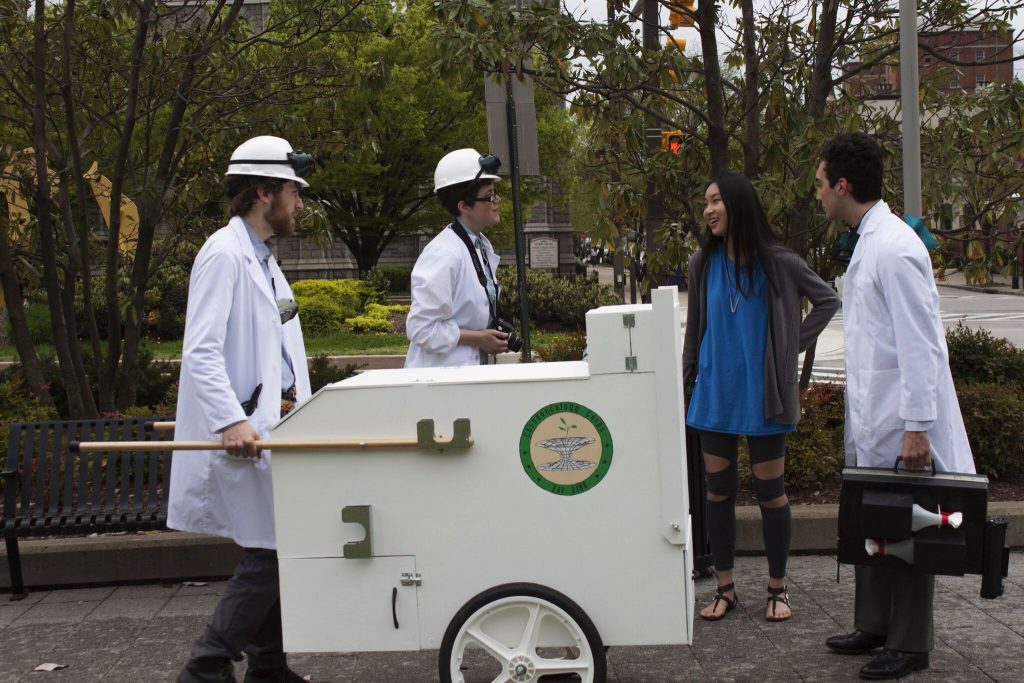 Benjamin Andrew
Benjamin Andrew
In three mini-installations and a screen print, Benjamin Andrew imagines an extra-terrestrial civilization that arrives on planet Earth to study the flora and fauna. In the screen print “Microobservatory,” a small human “micro-naut” resembles Sci-Fi illustrations from the 40s and 50s. Each of his mini-installations combines multiple parts and mixed media into “mocumentary-style” assemblages that are humorous and interactive reactions to scientific topics which can usually be dull. According to the artist, each is designed to “purposefully muddle the boundaries of fact and fiction – deploying time travelling scientists from the future to start conversations about climate change.”
At the opening, Andrew confessed that he is a science fiction geek, and a member of the Sci-Art Center. Andrew also performed at the opening, with a hands-on activity for visitors in the natural fermentation process. Outside the gallery, you could make ginger kombucha and sour dough starters, which was an engaging way to forge an introduction with the theme of the show.
 Kathy Strauss
Kathy Strauss
Printmaker Kathy Strauss explores the visual impact of deadly bacterium in her larger-than-life mono-prints on paper. In “Search,” she embroiders cellular structures in random patterns across the surface of the paper, exposing the inherent beauty of microscopic views of bacterium vibrio cholera (Cholera). Isolated from its deadly purpose, the cholera strands are reduced to patterns that recall micro and macro worlds. It was interesting to consider how something so visually pleasing can cause so much suffering in the real world. This opposition between opposing forces is a subject I believe Strauss would benefit from investigating more in her work.
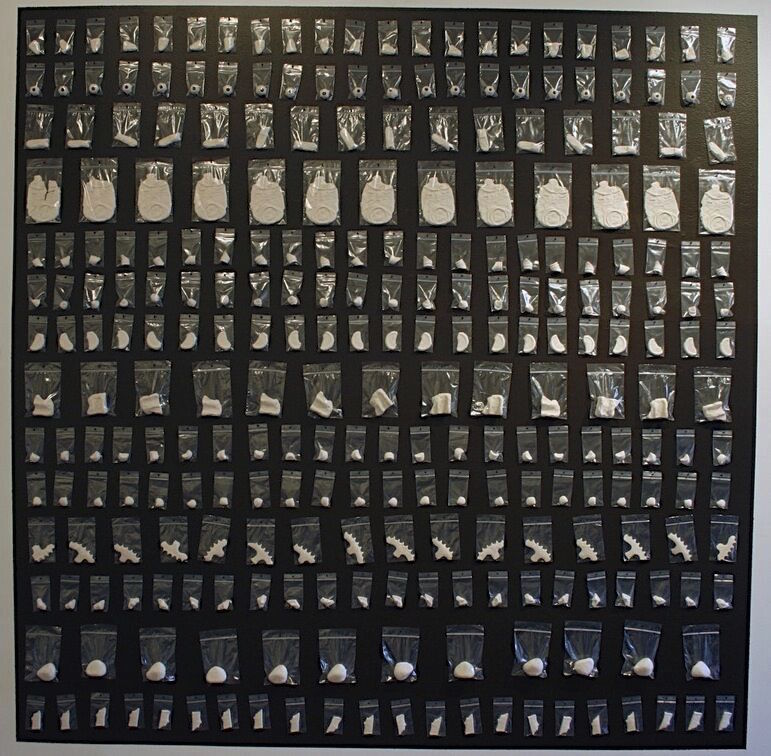
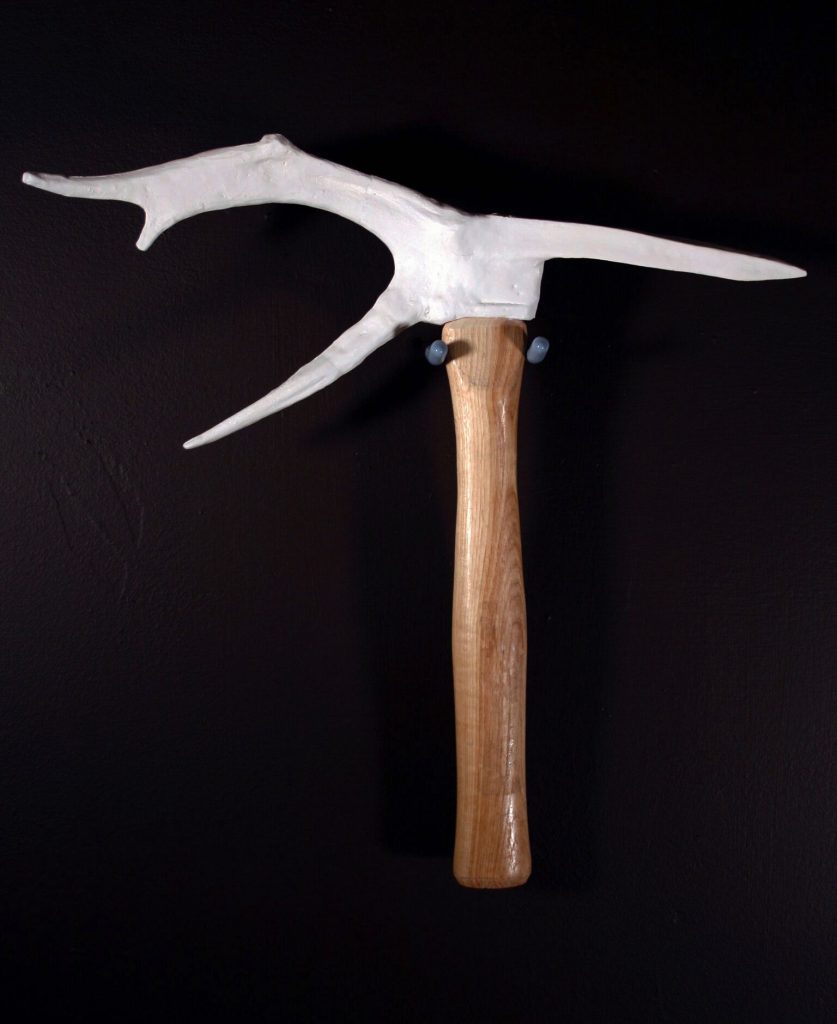 Elizabeth Crisman
Elizabeth Crisman
Elizabeth Crisman’s “Knowledge” features 300 small plastic specimen bags, each containing a tooth. While the teeth in the pseudo-archeological display appear to be real, they are actually slip cast Wisdom teeth. After Crisman received a travel grant from the Center for Emerging Visual Artists to work on an archeological dig in Israel in 2010, she became interested in Neolithic tools. In this exhibit, the artist also fabricated Neolithic-looking tools, and they are displayed in windows visible only from the outside of the gallery building.
Since teeth (bones) and tools are the most common artifacts found in archeological digs, a wealth of information can be extrapolated from these finds. Crisman’s faux artifacts remind us of how much human beings have changed, physically, pointing out that Wisdom teeth are no longer necessary (we don’t need them to macerate plant cellulose), and technologically. Although these objects are irrelevant, they conjure up a strange beauty, nostalgia for simpler pre-historic times.
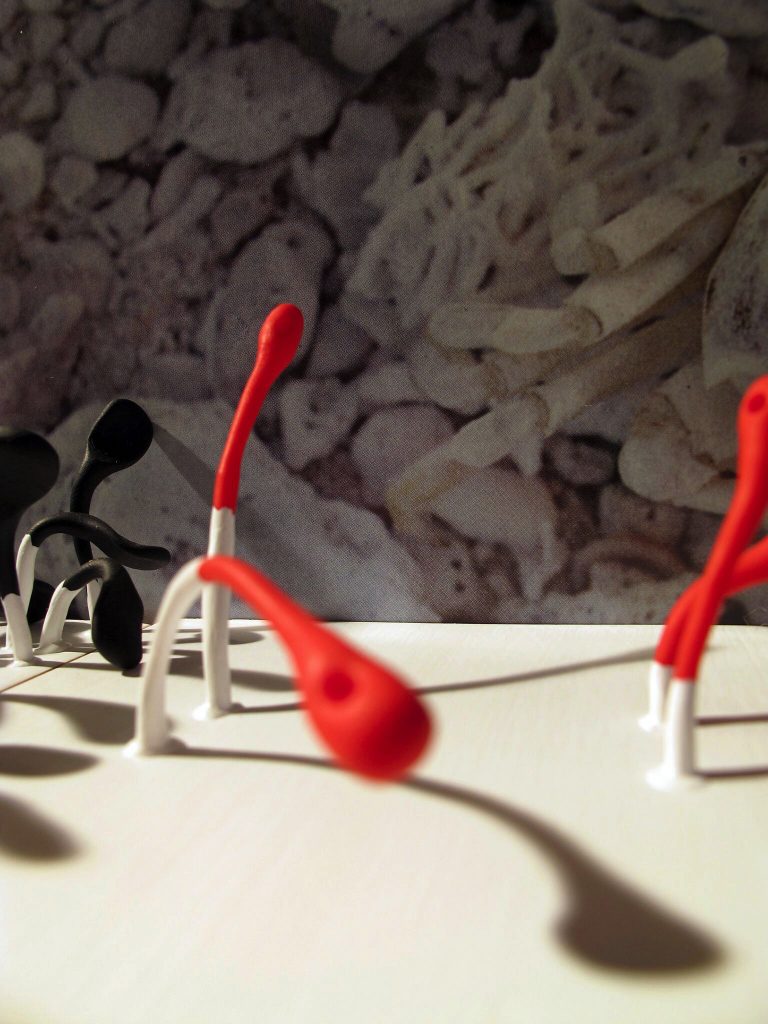 Nicole Shiflet
Nicole Shiflet
Nicole Shiflet also made fictionalized specimens, based on her fascination as a child of science diagrams and obsessively collected science textbooks. Her large-scale clay models resemble cilia, but are painted in bright colors and photographed in front of images of endangered species, which explore the difference between macro and micro scales, borrowing the language of old-school natural science displays.
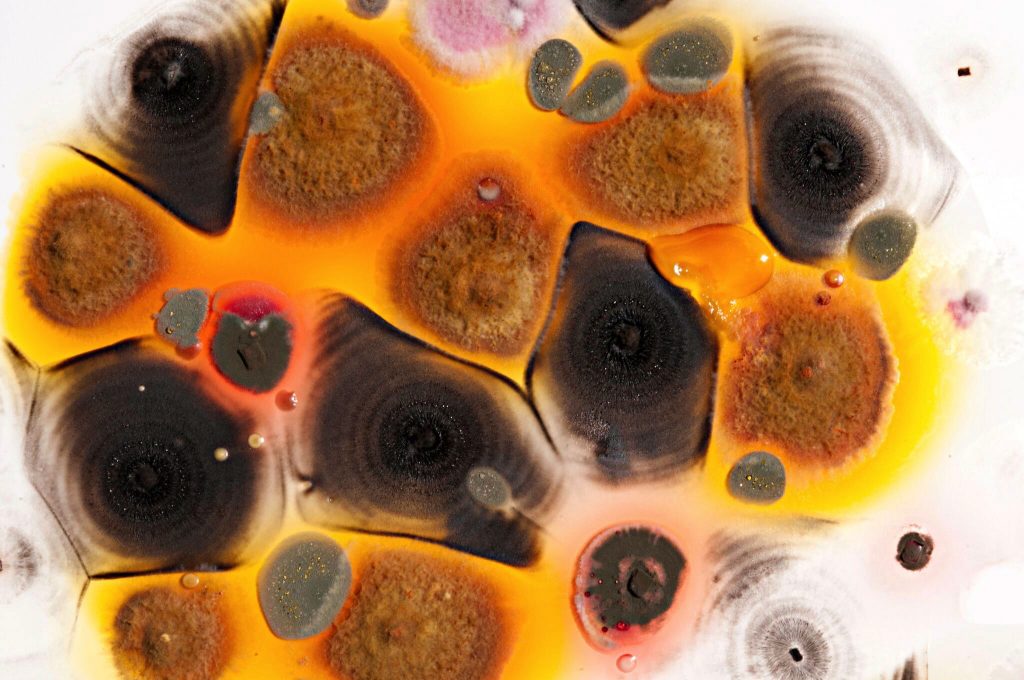 Selin Balci
Selin Balci
Of the group, it appears that Selin Balci can offer the most actual science experience. She trained as a microbiologist in Turkey, but became fascinated by the natural patterns of microorganisms. She went on to grow colorful bacteria in petri dishes and on paper – as art. Often, the patterns she creates resemble marble, which harken back to Turkish patterns and design sensibilities.
Overall, this is a visually rewarding show, full of gorgeous patterns, luscious color, and intricate detail. These elements, designed to attract viewers and pique their interest, are necessary in a country where science is considered mostly suspect and irrelevant, until one is seriously ill. Under the Scope is an opportunity to bring ordinary citizens closer to science; even though the works presented here are not necessarily scientifically accurate, they embody a fascination with the inner workings of the natural world that is contagious.
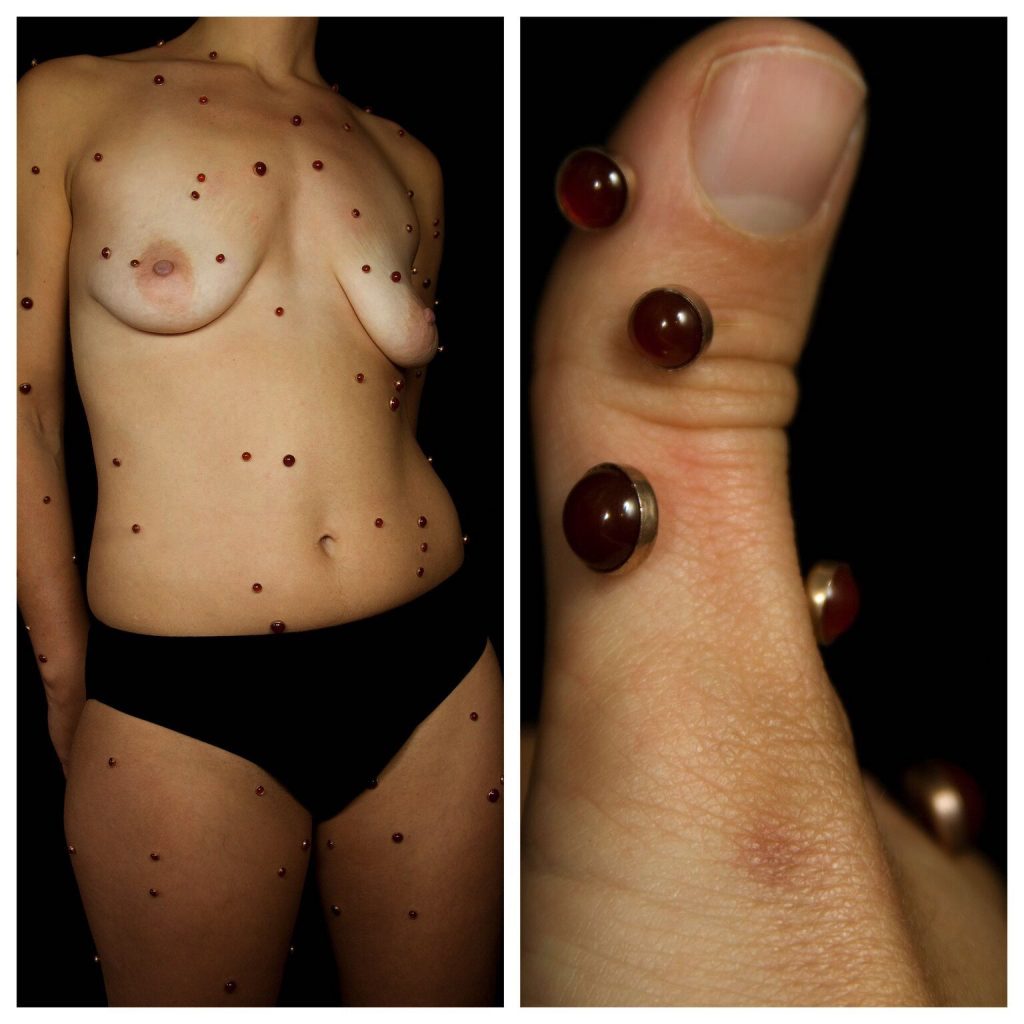 Lauren Kalman
Lauren Kalman
*******
Author Anna Fine Foer is an Annapolis-based Visual Artist. View her work here http://www.annafineart.com.
Under the Scope is up at Goucher College’s Silber Gallery through December 4, 2016.
Photo of Ben Andrews Workshop by Jessye Grieve-Carlson
